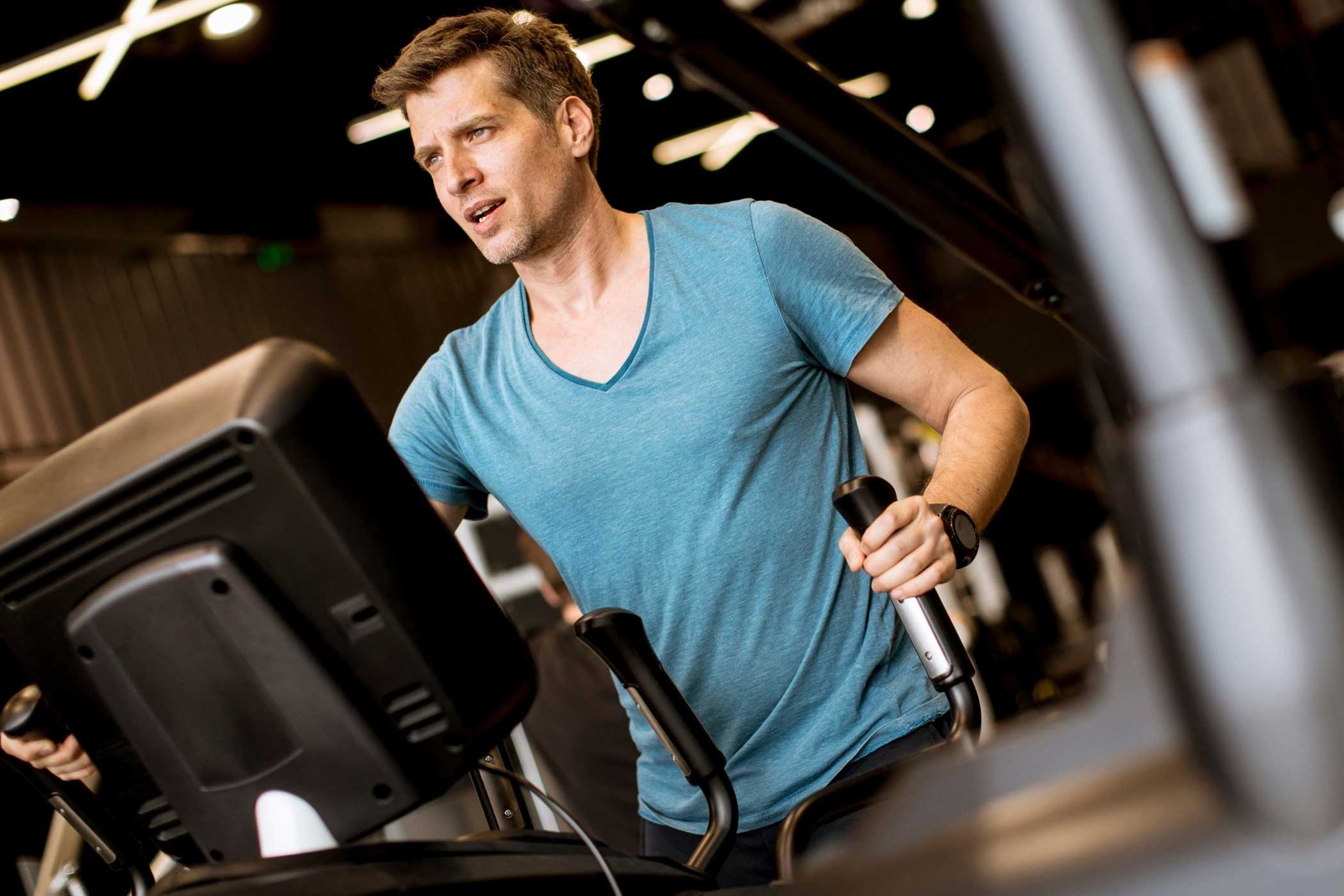You may not believe me, but the elliptical can be a whole lot of fun if you know what to do. Read on and you may just want to hop on one today.
When it comes to cross-training on the elliptical, most runners would probably rather watch paint dry. It’s a form of torture reserved for injured runners. But as boring as it may be, there’s no denying the effectiveness elliptical training can bring to maintaining or even improving a runner’s fitness without the hard pounding that comes with running.
The most obvious scenario for using an elliptical is when you’re sidelined with an injury and can’t run. However, I wouldn’t discount its benefits even for healthy runners, especially if you’re new to running or training for an ultramarathon.
While it’s not an exact match, the motions of running and elliptical are somewhat similar — circular forward/backward motion of the hips in an upright position. In fact, one study, although small, found, “in moderately active females similar physiological improvements were observed using stair-climber, elliptical trainer and treadmill running when training volume and intensity were equivalent.”
Elliptical Training After Injury
When most runners think about using the elliptical, it’s probably because they’re injured, which makes sense. It’s a fantastic way to maintain fitness when you can’t run.
The biggest mistake I see runners make when limited to cross-training only is not varying intensity levels enough. Like your running schedule, you need hard, easy, and moderate cross-training days. By adding a workout like the rolling hill simulator, you’ll gain the much-needed intensity.
Elliptical Training for New Runners
As a running coach, my first question for new runners is “Do you have access to an elliptical or stationary bike?” New runners are limited in the number of days they can run due to their high chance of overuse injuries.
Supplementing running with a few days of cross-training will greatly increase a new runner’s fitness level. It allows me as a coach to add one or two days of aerobic activity while keeping the risk of injury lower than running alone.

Elliptical Training for Ultrarunners
Work capacity is the ability to handle large workloads. For ultrarunners, having a high work capacity is the crown jewel. The more volume you can handle during training, the more likely your success.
The problem is that every runner has limits regarding how much work they can handle before getting injured. Using the elliptical during training allows you to add additional volume to your training without the risk of getting injured. This allows you to increase your workload safely.
This workout is designed to mimic rolling hills, and you’ll increase and decrease the resistance level as the 10-minute intervals progress. I wouldn’t stress too much about finding the ideal resistance level during your first attempt at this workout. You can always adjust down or up if needed. The key to the workout is more following a pattern of two levels up, one level down each minute.
Rolling Hill Simulator: The Workout
- Warm-up: 10 minutes easy with a very low resistance level
- Start a timer on a watch or phone for a 10-minute interval
- Increase resistance by two levels every minute ending in an odd number (for example 1, 3, 5, 7, 9)
- Decrease resistance by one level every minute ending in an even number (for example, decrease by one on 2, 4, 6, 8, 10)
- Reduce resistance to warm-up level for 2 minutes
- Repeat the above 10-minute interval two to three more times
- Cool-down: 10 minutes easy at starting resistance level
FAQ
What Are the Benefits of Using the Elliptical for Runners?
Using the elliptical allows runners to add more aerobic work to their training without increasing their chances of injury. By adding more exercise that’s safe, you’ll increase your fitness level and be able to handle more running volume in the future.
Is the Elliptical as Good as Running?
The short answer is no, but it certainly does help. The previously mentioned study found that “physiological improvements were observed using stair-climber, elliptical trainer, and treadmill running when training volume and intensity were equivalent.” While you may get similar physiological improvements, which is great when you can’t run or need to supplement your running, real running will always be better.












